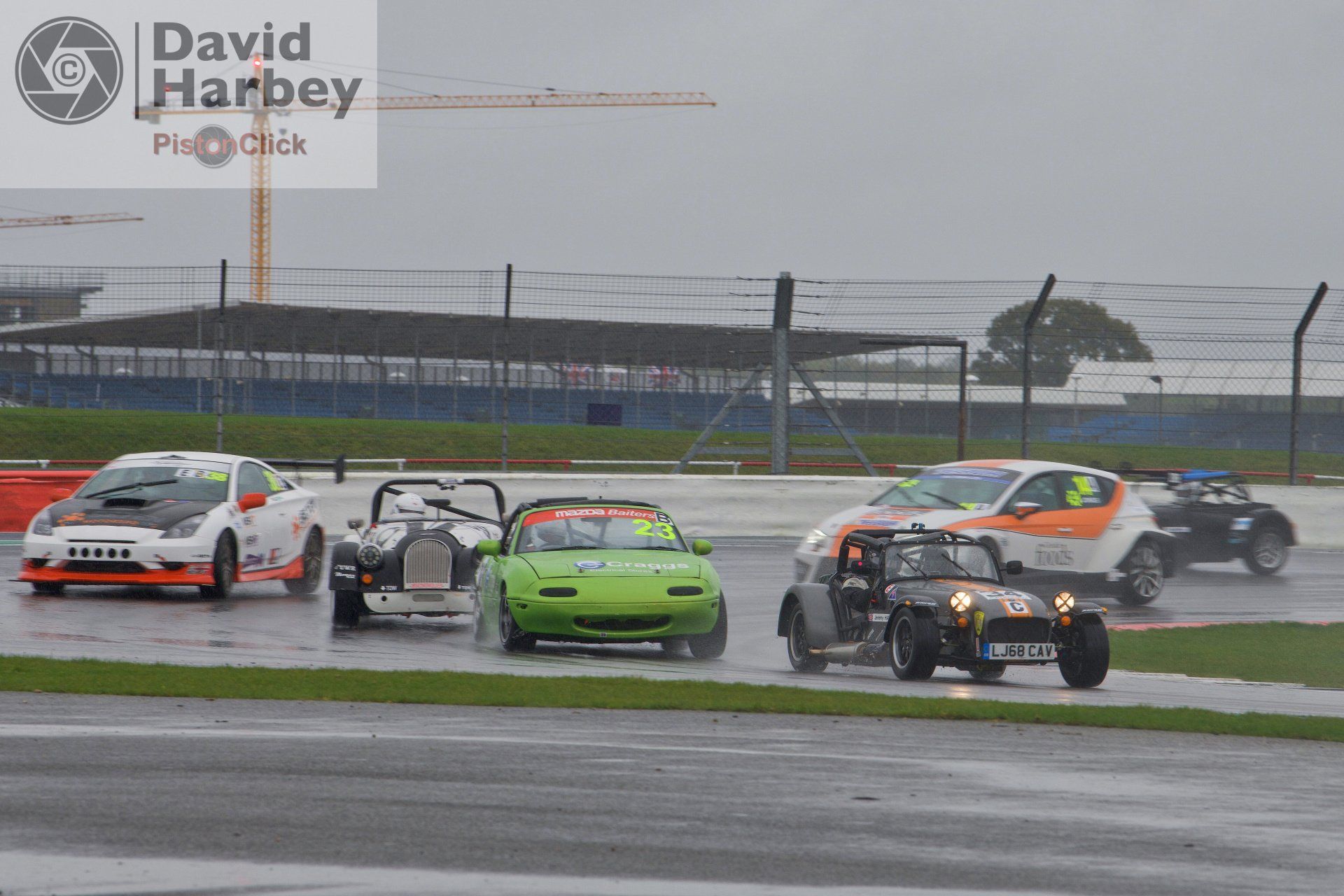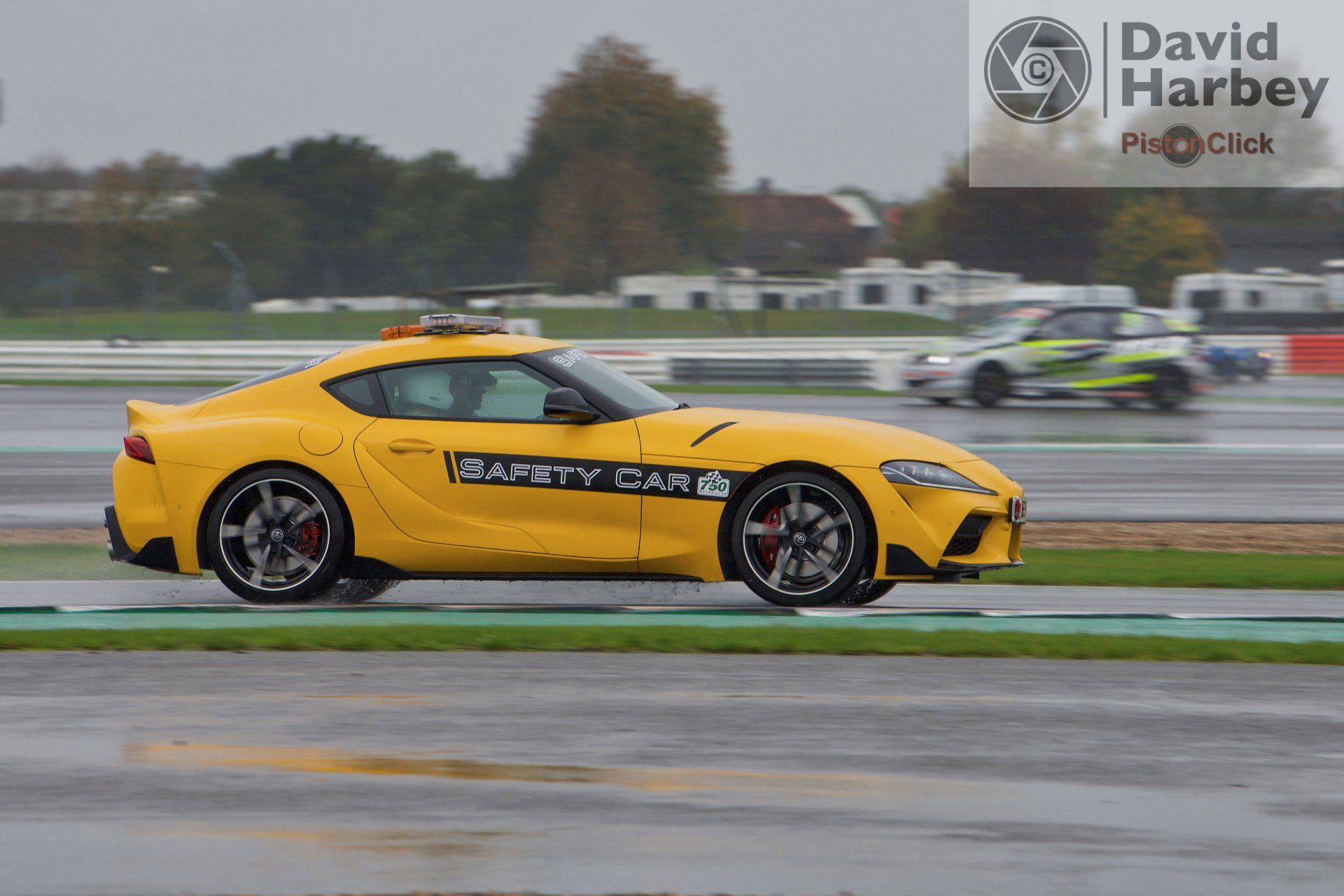Birkett Six-Hour Relay at Silverstone
The Birkett Six-Hour Relay
Silverstone
A Report by David Harbey
The traditional closer to the club racing season, the Birkett is one of those quintessential British events. Just get 70 teams of 3-6 racers and their cars and let them loose in a relay format for six hours on the Silverstone Grand Prix circuit. The event is run by the 750 Motor Club.
The event dates back to 1951 and is named after Holland “Holly” Birkett one of the 750 Motor Club founders and who’s brainchild the race was.
This year saw the 69th running of the Birkett – which runs to a dual scratch and handicap system meaning there are two winning teams. Thus there are two potential approaches for the more wily team managers to consider.
Closed wheel cars are allowed to race leading to a wide range of vehicles from 1960s Midgets / Sprites and A30s through to TCR Seats and Radicals.
There’s also a wide range of Caterhams and derivatives. Some teams have “imaginative” names - there’s a link to the results at the foot of this report.
Andrew, my son and occasional contributor to PistonClick, and I had been weighing up where we fancied going for some motorsport with a range of options – all of which had a decidedly damp weather forecast.
In the end we opted for the half hour drive to Silverstone accompanied by a brolly and wearing the “right” clothes.
The worst of the weather was due in early afternoon so with the race starting at 11.45 we headed to the cover afforded by the BRDC grandstand to see the first laps at Brooklands and Luffield – sans cameras.
We were impressed to see that the safety car was a brand new, bright yellow Toyota Supra splashing its way through the standing water.
The race was underway so it was time for lunch in the Paddock Café. Suitably nourished, we decided it was about time we started taking some photos. As the race was on the Grand Prix circuit, we had more scope than the shorter, fence-infected National Circuit.
Our first port of call was the photographer’s window in the fence between the Loop and Aintree. Fair to say, we were pretty much alone there …
There’s a great panning shot with other cars out of focus in the background and as much or little grandstand as you want. There’s the potential for spray and water dripping off the sills / wheel arches. Focal length of 200mm is fine here.
We didn’t have to worry about shooting into the sun either …
Its slightly disconcerting having got used to seeing a black car #4 become a white car #4 on the next lap. Much as the romantic in me would like to think there is a baton handed between the drivers its far more simple than that.
As one car comes down pit lane and round to the back of the pit garages, the next team car heads out of the garage onto pit lane and into the race.
If one team car suffers problems, another team car can enter the race. Transponders mean that live timing keeps an eye on what is going on at all times and there were penalties dished out for two cars on track at the same time.
The top quality commentary team of Marcus Pye, Lewis Beales and Ian Sowman kept us up to date.
There’s another window between Village and the Loop which gives either a head on shot of the cars or a view towards Aintree. A longer zoom can be handy here for either of those shots.
We then headed to the gate at Village – here the longer zoom is probably better – or you can crop more heavily. There’s a shot of the cars heading into Village with blurry scaffolding behind or of the cars heading up to the Loop.
Care is needed here to avoid the commentary box, marshal’s loos, and other circuit furniture.
A quick dry-out in the car and we headed to Club at the south end of the circuit. Here there is a fence free view of the end of Vale and the left and long right of Club.
I decided to hold the brolly here while Andrew got the shot of the “yellow Clubmans car with reflection” you will see the standing water. Then as another safety car was scrambled, it was time to head back to the pits and paddock café for a mid afternoon coffee.
It was turning into a typical British Autumn day …
The pit garages are free to walk through, but not the pit-lane for obvious reasons. Here the teams line up ready for the next driver to head off into the race and there’s some good photos to be taken – especially of the driver waiting for their turn. I’d swapped to the 24-120mm zoom here.
There was good representation from the Forces with teams from all three services; they have an Armed Forces Challenge within the 750MC race meetings. The RAF teams were particularly distinctive.
Of course, there is always room for the race helmet shots …
… and the rain beading on the bonnet !
And so, for the final hour it was out to Luffield. Andrew had the 200-500mm zoom, the step and the new mega-monopod (2m+ of 3leggedthing Trent) so he could shoot from the terracing above the fence.
I had the 70-200mm zoom and shot through the fence – firstly at Brooklands. I was using a step to get above the lower double layer fencing.
Then to the exit of Luffield, again through the fence.
Finally, Andrew wanted to get some light trails …
With half an hour to go, the red flag was thrown after another safety car was required. The light had gone; the rain was still falling.
This was our first time at the Birkett – we will be back. Thanks to the marshals, the organisers, the teams and perhaps, most of all, to the “right” clothing and rain covers we both used to keep our equipment reasonably dry.
The results
were produced quickly for both the scratch race and the handicap.










































